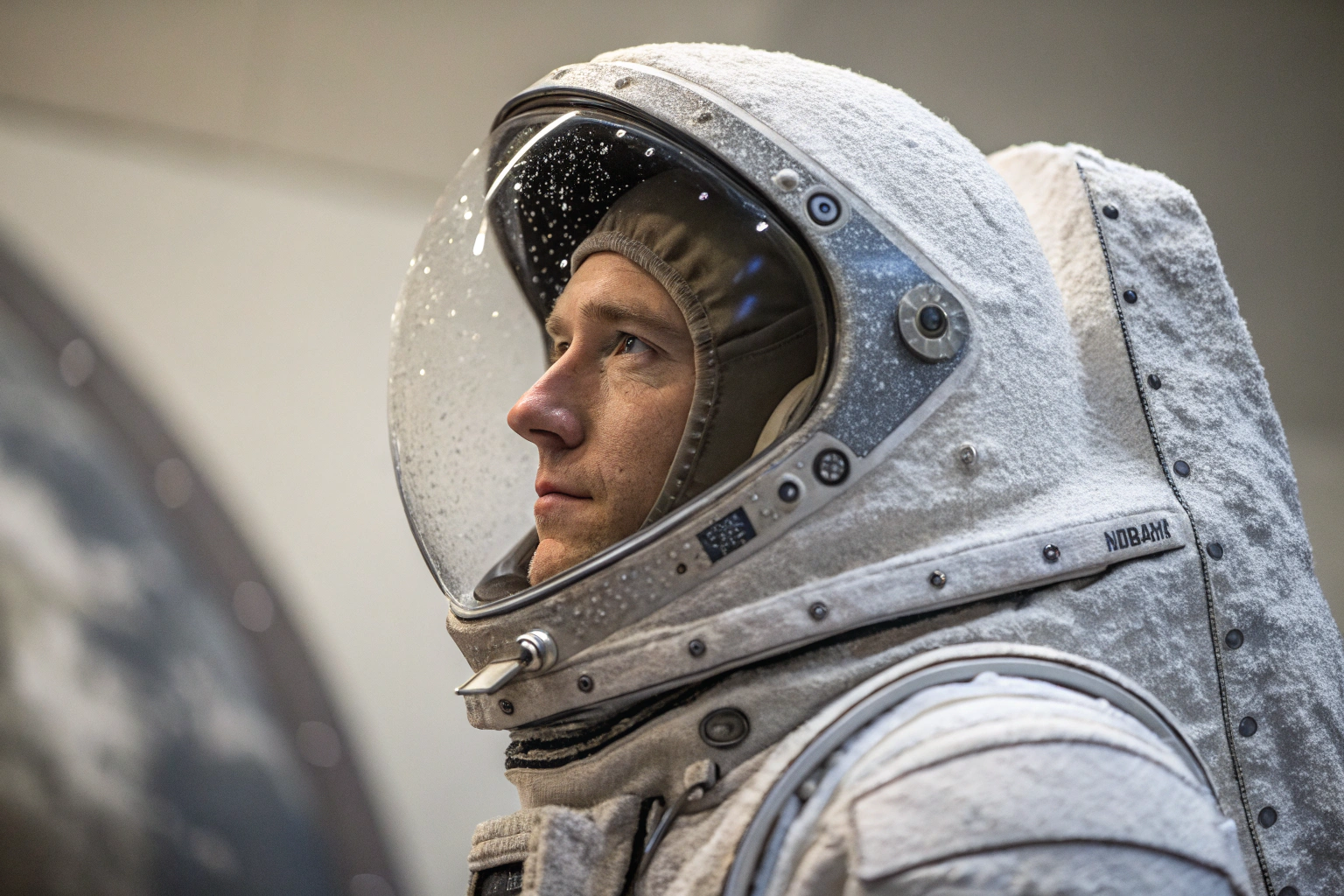Space travel always pushes materials to their limits. Lunar dust is one of the biggest problems astronauts face on the Moon. The dust is sharp, sticky, and very fine. It can damage space suits, reduce movement, and even cause health risks if it gets inside spacecraft. This article explains why lunar dust is so difficult, what we learned from Apollo, and what new fabrics may protect astronauts in future missions.
Why lunar dust poses extreme filtration challenges
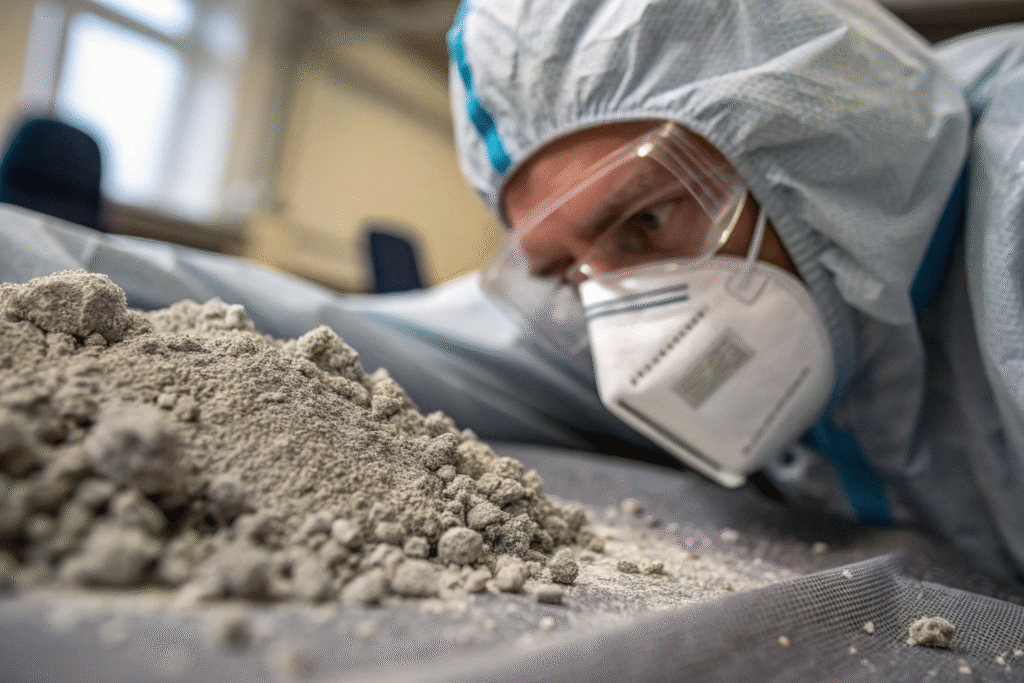
Abrasive, electrostatic lunar regolith
Lunar dust has very sharp edges. Scientists describe it as tiny pieces of broken glass. The dust sticks to fabric because of static electricity. Wired reports that Apollo astronauts found dust stuck everywhere, including inside their cabin. A study in ScienceDirect explains that the size of many dust grains is smaller than 10 microns, which makes them almost impossible to filter fully.
Filtration vs durability trade-off
Fabrics must stop dust, but they must also allow movement. If the weave is too tight, the suit becomes heavy and stiff. If the weave is too loose, dust can pass through. NASA’s paper on dust control (NTRS) says the best solution may be a mix of coatings, new fabrics, and better suit designs. Wikipedia shows that engineers are even testing new airlock systems to keep dust outside the suit.
Lessons from Apollo and current suit fabrics
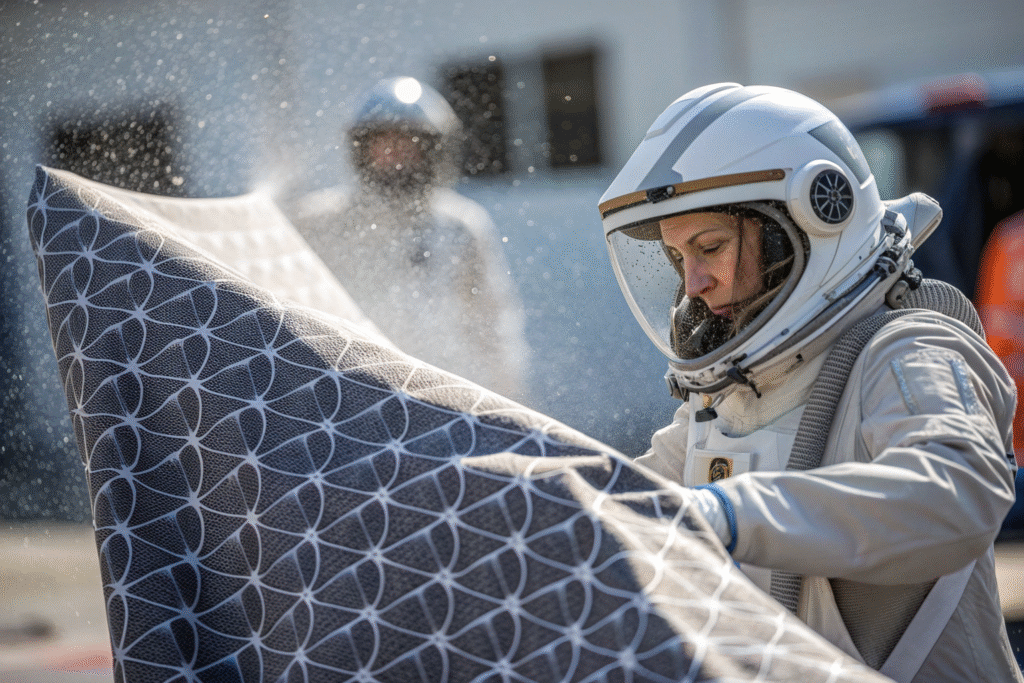
Beta cloth and Apollo experiences
Apollo suits used a material called Beta cloth. It was made from glass fibers and coated with Teflon. NASA explains that dust easily worked into this fabric and made it weaker. Specialty Fabrics Review shows that astronauts had to brush dust off their suits, but brushing made the damage worse. After only a few days of use, the suits already showed wear.
Ortho-Fabric in EMU and its limits
Modern space suits use Ortho-Fabric. It combines Gore-Tex, Kevlar, and Nomex. The outer layer can resist tearing and protect against heat. The Thermal Micrometeoroid Garment entry describes its role as the shield of today’s suits. But Specialty Fabrics Review points out that even this fabric cannot fully stop lunar dust. On long missions, dust will still find its way through.
Emerging fabrics and coatings for dust mitigation
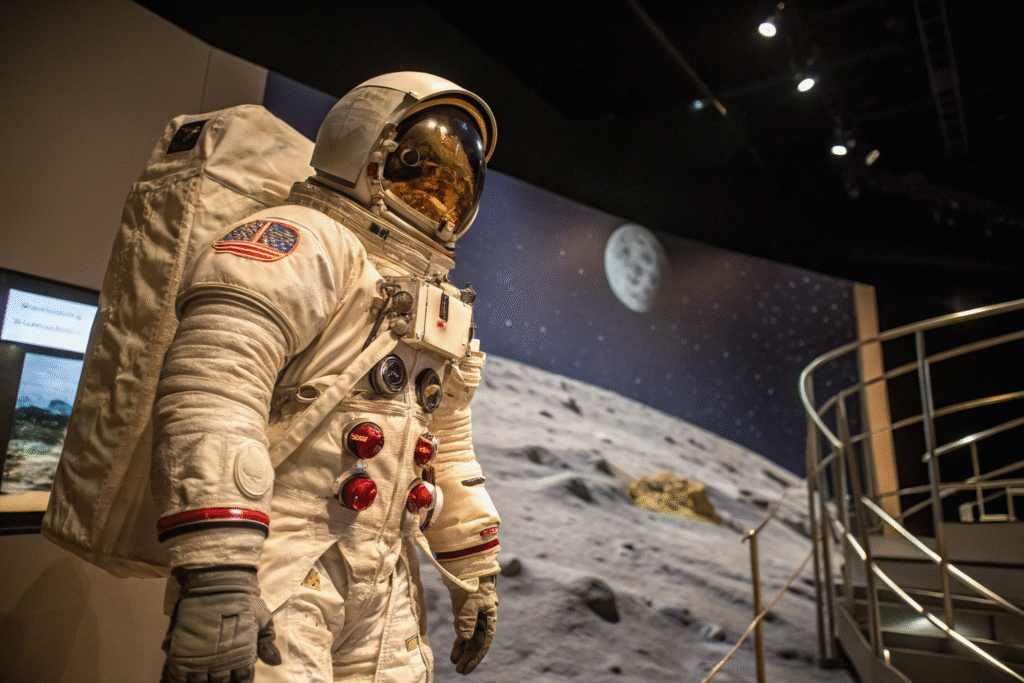
Nanocoatings and passive treatments
Researchers in Europe are testing new coatings for fabrics. ESA’s PExTex project uses very thin layers that mimic the surface of a lotus leaf. These layers make dust slide off the suit instead of sticking. The coating also reduces wear and helps fabrics last longer.
University of Delaware’s EPG shell innovation
A team at the University of Delaware is building a new type of suit shell. It combines special fibers with a liquid that hardens under pressure. This design protects against impacts, resists damage, and makes it harder for dust to stay on the surface. It is one of the first fabrics made for both strength and dust control at the same time.
Future smart textiles: electrostatic & self-healing
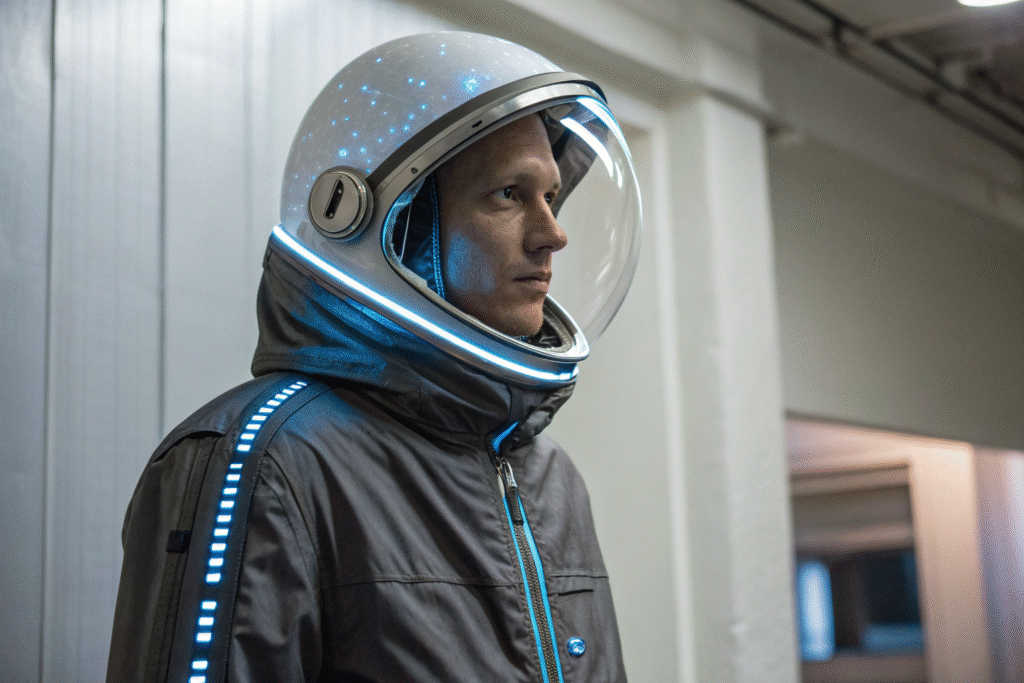
Electrostatic dust repulsion fabrics
Hawaii Pacific University is testing LiqMEST. This is a fabric that creates a small electric field. PhoneMantra explains that the field can push dust away. Astronauts could turn it on and make the suit “shake off” dust instead of brushing it.
Carbon nanotube smart fibers & EDS integration
NASA and other groups are studying carbon nanotube fabrics. These fabrics can carry electricity. Academia.edu shows how they can work with Electrodynamic Dust Shields. Together they can clear dust from the surface during a mission. These smart fabrics are light and flexible, so they fit into normal suit designs.
Conclusion
Astronauts cannot avoid lunar dust, but they can prepare for it. Past missions taught us that normal fabrics wear down quickly. Modern suits with Ortho-Fabric are stronger, but still not enough. New coatings and smart textiles offer better solutions. The best path may be to use both passive and active fabrics together. A future space suit could use coatings to block dust and electric fields to push away the rest. With these steps, astronauts will stay safe and keep exploring the Moon.

